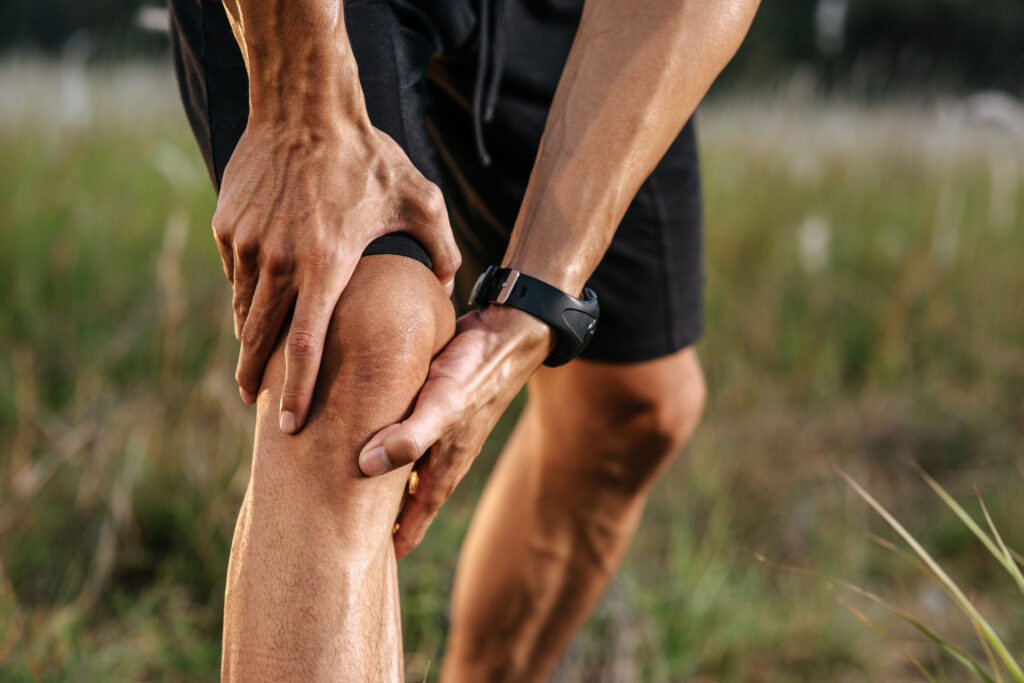If you're looking to improve your flexibility, you'll find that effective techniques can make a significant difference. Incorporating dynamic and static stretching into your routine can enhance both performance and recovery. But it's not just about stretching; practices like yoga and Pilates play essential roles too. You might be surprised by how a consistent approach can yield results you never thought possible. What's more, there are specific methods that can elevate your flexibility to new heights—methods you won't want to overlook.
Understanding Flexibility
Flexibility plays an essential role in your overall physical performance and well-being. It's all about the ability of your joints and muscles to move through their full range of motion. When you understand flexibility, you'll realize it's not just about being able to touch your toes; it's about enhancing your day-to-day movements and reducing the risk of injuries.
You've probably noticed that flexibility varies among individuals. Factors like genetics, age, and activity level influence how flexible you are. For instance, a dancer or gymnast typically possesses greater flexibility than someone who leads a sedentary lifestyle. However, you can improve your flexibility regardless of your starting point.
Understanding the different types of flexibility is vital. Static flexibility refers to your ability to hold a position, while dynamic flexibility involves moving through a range of motion, such as in sports or dance routines. Both types are important. You'll want to incorporate exercises that target both, as they complement each other and contribute to overall mobility.
Another aspect to reflect on is the role of connective tissues, like tendons and ligaments. These tissues can adapt over time, but they require consistent and appropriate stretching routines to do so. Knowing your body's limits is essential; pushing too hard can lead to injuries.
Importance of Stretching
Stretching is a fundamental practice that complements your flexibility training and offers numerous benefits for your body. Incorporating stretching into your routine can improve your range of motion, reduce the risk of injuries, and enhance your overall performance. Whether you're an athlete, a fitness enthusiast, or someone who simply wants to feel more comfortable in daily activities, stretching is essential.
One of the primary advantages of stretching is that it helps maintain muscle elasticity. As you age or engage in repetitive activities, your muscles can become tight and less flexible. By stretching regularly, you keep your muscles long and supple, which can prevent stiffness and discomfort.
Additionally, stretching increases blood flow to your muscles, promoting recovery and reducing soreness after workouts.
Moreover, stretching can greatly improve your posture. Tight muscles, especially in the hips, chest, and back, can lead to poor alignment and discomfort. By focusing on stretching these areas, you can enhance your posture and alleviate tension, making everyday movements easier.
Don't forget about the mental benefits of stretching, either. Taking time to stretch can provide a moment of relaxation and mindfulness amidst a busy day. It allows you to connect with your body, reduce stress, and boost your overall well-being.
Incorporating a consistent stretching routine into your life can yield substantial improvements in both your physical and mental health. Prioritize stretching, and you'll notice how it elevates your flexibility and enhances your everyday experiences.
Dynamic Stretching Techniques
Dynamic stretching is a powerful tool that can enhance your flexibility and prepare your body for activity.
By incorporating effective warm-up routines and common dynamic techniques, you'll not only improve your range of motion but also reduce the risk of injury.
Let's explore how these strategies can transform your approach to flexibility training.
Benefits of Dynamic Stretching
Many athletes and fitness enthusiasts find that incorporating dynamic stretching into their routines offers significant benefits. Unlike static stretching, dynamic stretching involves controlled movements that help prepare your muscles for activity. By engaging in these movements, you increase blood flow to your muscles, enhancing your overall performance and reducing the risk of injury.
Dynamic stretching improves your range of motion, allowing you to move more freely and efficiently during workouts or sports. As you perform these stretches, you activate key muscle groups, which can lead to better coordination and balance. This is particularly useful for athletes who rely on precise movements, like runners or dancers.
Additionally, dynamic stretching can boost your energy levels and mental focus. By incorporating movements that mimic your workout, you mentally prepare yourself for the physical demands ahead. This can result in improved motivation and a more effective exercise session.
Ultimately, dynamic stretching is a powerful tool in your flexibility arsenal. By making it a regular part of your warm-up routine, you'll enhance your athletic performance and enjoy a safer, more productive workout experience.
Effective Warm-Up Routines
How can you guarantee your body is fully prepared for exercise? The answer lies in effective warm-up routines, specifically dynamic stretching techniques. These movements not only increase your blood flow but also enhance your flexibility and range of motion.
Start with leg swings—forward and backward, then side to side. This targets your hip joints and prepares them for more intense activity.
Next, incorporate arm circles. While standing, extend your arms and make small circles, gradually increasing their size. This warms up your shoulders and upper body.
You can also try torso twists, standing with your feet shoulder-width apart and rotating your upper body from side to side. This engages your core and helps loosen your spine.
Don't forget about lunges with a twist. Step forward into a lunge and twist your torso towards the leading leg. This stretches your hip flexors and adds a dynamic element to your routine.
Aim to spend about 5-10 minutes on these exercises before your workout. By committing to these dynamic warm-ups, you'll not only optimize your performance but also reduce the risk of injury, ensuring you're ready to tackle any challenge ahead.
Common Dynamic Techniques
While incorporating dynamic stretching techniques into your routine, you'll find several effective movements that can greatly enhance your flexibility.
One popular technique is leg swings, where you stand on one leg and swing the other leg forward and backward. This helps open up your hip joints and increases mobility.
Another effective movement is arm circles. Stand tall and extend your arms out to the sides, making small circles, gradually increasing the size. This warms up your shoulders and increases blood flow to the upper body.
High knees are also a great option. By jogging in place and driving your knees up to your chest, you engage your hip flexors and improve overall leg flexibility.
Don't forget about walking lunges. Step forward into a lunge, keeping your front knee over your ankle and your back knee hovering just above the ground. This dynamic stretch targets your hips and quads effectively.
Incorporating these techniques into your warm-up routine will prepare your muscles for more intense activities and greatly boost your flexibility.
Make sure to perform each movement smoothly and control your range of motion for the best results.
Static Stretching Methods
Static stretching methods offer a powerful way to enhance your flexibility and overall muscle function. These stretches involve holding a position for a specific duration, usually between 15 to 60 seconds. By doing this, you allow your muscles to relax and lengthen, which can lead to improved range of motion and reduced risk of injury.
To get started, choose a few key muscle groups you want to target. Common areas include the hamstrings, quadriceps, shoulders, and lower back. For instance, to stretch your hamstrings, sit on the ground with one leg extended and the other bent. Reach toward your toes, keeping your back straight, and hold the position. You should feel a gentle pull, but never pain.
It's essential to breathe deeply while holding each stretch. This helps your muscles relax and allows you to go deeper into the stretch. You can also use props like yoga blocks or straps to assist you in achieving a better stretch if you struggle to reach certain areas.
Consider incorporating static stretching into your routine after workouts or on rest days. This timing helps your muscles recover and can enhance your overall flexibility over time.
Remember to listen to your body; if something feels uncomfortable, ease out of the stretch. With consistent practice, you'll notice improvements in your flexibility, making everyday movements easier and more enjoyable.
Incorporating Yoga Practices
Yoga practices can be a fantastic way to enhance your flexibility and overall well-being. By incorporating various yoga poses into your routine, you'll not only stretch your muscles but also improve your balance and strength.
Start with foundational poses like Downward Dog and Cat-Cow. These poses help lengthen your spine and stretch your hamstrings, making them essential for increasing flexibility.
As you progress, try incorporating poses such as Warrior II and Triangle Pose. These postures engage multiple muscle groups, promoting deeper stretches and better alignment. Always listen to your body and hold each pose for five to ten breaths. This will allow your muscles to relax and release tension over time.
Consider adding a regular yoga practice to your weekly routine. Even just two to three times a week can make a significant difference. If you're new to yoga, consider joining a class or following online videos to guarantee you're practicing the poses correctly.
Focus on your breathing throughout your practice. Deep, steady breaths will help you sink deeper into each stretch and create mindfulness.
Don't forget to include a cooldown with poses like Child's Pose and Savasana. These provide relaxation and a moment to absorb the benefits of your practice.
Utilizing Foam Rollers
In addition to yoga, utilizing foam rollers can greatly enhance your flexibility and aid in muscle recovery. Foam rolling, or self-myofascial release, helps relieve muscle tightness and improve blood circulation. When you roll over the foam surface, you're applying pressure to specific areas, breaking down knots and adhesions in your muscles. This technique can lead to increased range of motion, making it easier for you to perform stretches and exercises effectively.
To get started, choose a foam roller that suits your needs. A medium-density roller is a great option for beginners. Begin with your calves or thighs—simply place the roller under the muscle and gently roll back and forth. Spend about 30 seconds to a minute on each area, and don't rush. If you feel a tender spot, pause and apply pressure for a few extra seconds.
You can also target your back, glutes, and shoulders. Incorporating foam rolling into your routine before or after workouts can be highly beneficial. It prepares your muscles for activity and helps them recover afterward.
Try to integrate foam rolling into your weekly regimen, aiming for at least two to three sessions. You'll notice improvements not just in flexibility, but in overall muscle function as well.
Benefits of Pilates
Enhancing your flexibility through Pilates offers numerous benefits that can elevate your fitness journey. First and foremost, Pilates improves your overall flexibility by promoting a full range of motion in your joints. As you practice various stretches and movements, you'll notice increased lengthening in your muscles, making everyday activities easier and more comfortable.
Additionally, Pilates strengthens your core, which plays a vital role in maintaining proper posture and alignment. A strong core stabilizes your body during exercises, helping you perform movements with precision and control. This stability not only enhances your flexibility but also reduces the risk of injuries.
You'll also find that Pilates encourages mindfulness and body awareness. By focusing on your breath and movements, you develop a deeper connection with your body, allowing you to recognize areas of tension and tightness. This awareness leads to more effective stretching and improved flexibility over time.
Moreover, Pilates can be tailored to your individual needs, whether you're a beginner or an advanced practitioner. The variety of exercises allows you to challenge yourself at your own pace, ensuring that you're continuously progressing.
Lastly, practicing Pilates can boost your overall well-being. The combination of physical movement and mindful breathing can help reduce stress, promote relaxation, and enhance your mental clarity. Incorporating Pilates into your routine not only enhances your flexibility but also contributes to a healthier, more balanced lifestyle.
Warm-Up Routine Essentials
A proper warm-up routine is essential for maximizing your workout and preventing injuries. By preparing your body for the physical demands ahead, you enhance performance and reduce the risk of strains or sprains.
Here are four key elements to include in your warm-up routine:
- Dynamic stretches: Unlike static stretching, dynamic stretches involve movement and help increase blood flow to your muscles. Examples include leg swings, arm circles, and torso twists. These prepare your joints for the range of motion required during your workout.
- Gradual increase in intensity: Start with low-intensity exercises to elevate your heart rate gradually. Activities like jogging in place or brisk walking can effectively warm up your cardiovascular system and get your muscles ready for more intense work.
- Targeted muscle activation: Focus on the specific muscle groups you'll be using in your workout. If you're planning to do squats, incorporate lunges or glute bridges. This targeted activation helps guarantee those muscles are ready to perform at their best.
- Mobility exercises: Incorporate movements that promote flexibility and joint mobility, like hip circles or ankle rolls. This not only enhances your range of motion but also prepares your body for more demanding exercises.
Daily Flexibility Habits
Incorporating daily flexibility habits into your routine can greatly improve your overall mobility and performance. To start, consider setting aside just 10 to 15 minutes each day for targeted stretching. This doesn't have to be a huge time commitment; even short sessions can yield significant benefits.
Begin your day with gentle stretches when you first wake up. Focus on areas that feel stiff, like your neck, shoulders, and back. This can help loosen tight muscles and prepare your body for the day ahead.
Try to integrate stretches into your breaks during work or school. Whenever you feel tension building, take a moment to stand up, stretch your arms overhead, or reach for your toes. These mini-stretches can boost your energy and alleviate discomfort.
In the evening, dedicate some time to longer stretching sessions. Use this opportunity to engage in deeper stretches, holding each position for 20 to 30 seconds. This practice can enhance flexibility over time and help you unwind after a busy day.
Incorporating yoga or Pilates into your weekly routine can also be incredibly beneficial, as they focus on both strength and flexibility.
Lastly, listen to your body. If a stretch feels uncomfortable, ease off a bit. Consistency is key, so find a time that works best for you and stick with it.
Tracking Your Progress
As you commence your flexibility journey, tracking your progress can provide valuable insights and motivation. Knowing where you started and how far you've come can keep you engaged and committed.
Here are four effective ways to monitor your flexibility improvements:
- Take Measurements: Use a measuring tape to record the distance you can reach in various stretches. For example, measure how far you can touch your toes. Revisit these measurements every few weeks to see tangible progress.
- Use a Journal: Write down your daily flexibility routines, including the stretches you performed and how long you held each pose. This not only allows you to reflect on your journey but also helps you identify patterns and areas needing improvement.
- Capture Photos: Take progress photos of yourself in different stretches over time. Comparing these visuals can visually highlight your improvements and motivate you to push further.
- Set Goals: Establish specific, measurable goals for your flexibility. Whether it's achieving a split or increasing your reach in a stretch, having clear targets will keep you focused and driven.
Conclusion
To boost your flexibility, make stretching a regular part of your routine. Embrace dynamic stretches to prepare your muscles before activity and static stretches to enhance recovery afterward. Incorporate yoga and Pilates for added benefits, and don't forget to warm up properly. By establishing daily habits and tracking your progress, you'll see improvements in no time. Remember, consistency is key, so keep at it and enjoy the increased flexibility that comes with your efforts!



